#takeko nakano
Explore tagged Tumblr posts
Text







Yae no Sakura (Ep 27)
Takeko Nakano, will forever be known throughout history for her skills with Naginata that inspires girls today in Aizu.
#yae no sakura#yae's sakura#yae niijima#haruka ayase#ayase haruka#meisa kuroki#kuroki meisa#takeko nakano#onna musha#female warrior#japan#period drama#historical drama#taiga drama#japanese drama#asian drama#j drama#jdrama#dorama#jidaigeki#naginata
27 notes
·
View notes
Text

Nakano Takeko by Simon Bisley
11 notes
·
View notes
Text
Another Thing Blue Eye Samurai Got Wrong
There were women who fought as fighters and samurai (or more often called as onna-bugeisha or onna-musha) for their clan. They didn't have to hide their femininity. There is a long history of female warriors in Japan that date back to an Empress named Jingū (she ruled from 201 to 269 AD). I bring you two of the greats:
Tomoe Gozen

She was skilled at archery, the sword and the use of the naginata. Tomoe is one of the most feared women because of her cleverness and offensive tactical skills. Her men trusted and respected her. During the Battle of Awazu, she killed the Musashi clan leader. Sadly, there is no more records of her after that. Tomoe is the most known and celebrated of the onna-bugeisha.
Nakano Takeko

Like many samurai of her time, she wore the typical samurai armor but instead chose to wear a red hakama. This red hakama became a symbol of not just her femininity but empowerment. She fought in the Boshin War against Imperialists who wanted the Emperor to rise to power (they eventually won during the Battle of Toba–Fushimi).
Similar to the Kiheitai (or the ad hoc army by the Imperialists), she led the Jōshitai or women's army fighting on the side of the Tokugawa Shogunate.
Nakano was wounded with a rifle shot and rather than allowing her enemies to parade her lifeless body as a trophy, she ordered her sister (also a capable warrior as with her mother. all 3 women fought alongside each other) to cut her head off and burry her head in secret so her enemies would not have a reason to disgrace her. Her head was buried under a pine tree and her beloved naginata was given to a temple.
In Aizu during the Autumn festival, girls parade around the streets wearing a red hakama and a white headband to honor Nakano and the women fighters of the Jōshitai.
Other female fighters include Yamamoto Yae aka "Bakumatsu Joan of Arc" and Hangaku Gozen or Lady Hangaku.
______________________________________________________________
There is a reason the filmakers of Lady Snowblood (a film Blue Eye Samurai heavily borrows from) didn't chose to disguise Yuki as a man when she enacted her revenge.
#women samurai#sometimes reality is better than fiction#blue eye samurai#tomoe gozen#nakano takeko#break the stereotype#red hakama#why can't netflix make a series about these women
56 notes
·
View notes
Text

Nakano Takeko
#nakanotakeko
0 notes
Text

#history#culture#artwork#photography#digital art#true story#woman#writing#blog#stories#nakano takeko#art
0 notes
Note
Haiii Trickster!!
I got a quick question.
Have you gotten into the Assassin's Creed Fragments books lately? I've recently got one called "AC Fragments: The Blade of Aizu". It's set in 1800s Japan about the Shiba siblings, Atsuko and Ibuka, and their bond was tested by the circumstances of war and politics.
I even liked how it had Takeko Nakano as a member of the Assassin Brotherhood.
I haven’t !! Sounds cool though, thank you for bringing it to my attention !

Here’s the cover if anyone’s interested
28 notes
·
View notes
Text

(A print of the 1868 Battle of Ueno [source])
Okay, so this is a ways off, but what follows is an attempt to briefly outline for your enjoyment and edification what a hypothetical book by me on the Boshin War would look like.
First, it would follow Ishii Takashi's view that this was not one war, but three in one.
One side, the nascent Kyoto government, was consistent throughout. The other was not.
So we have the war from Kyoto to Edo against the former Shogunate, the war in Tohoku against the Northern Alliance, and the war in Ezo against the so-called Republic
Ōyama Kashiwa, whom I mentioned earlier, calls it "the Boshin campaign," which I think also has some utility.
I would also very sharply distinguish between the combatants fighting the Kyoto government. the Northern Alliance was not "pro-shogun," though it was allied with the former Shogunate's army
this is because of a thousand years of precedent of regional semi-autonomy. I wrote my dissertation on this. No, it doesn't matter what the tourist website you encountered told you, they're wrong.
You need to understand the Northern Fujiwara to understand the Tohoku alliance.
a longue duree perspective will likewise be necessary, because the outcome of this war, especially in the Tohoku region, was decided decades in advance, in part because of famine and depopulation.
they could never have won, not for lack of technology but because of the Tenpo Famine.
It will be brutal to write about the war, as writing about war necessarily is, because the so-called imperial army chose to exercise such brutality. They made it illegal for Aizu domain to bury its own dead, and thus so profoundly polluted the land that some Aizu survivors became Christian.
We will also need to appreciate the role of the foreign powers beyond what is normally spoken of in what English scholarship exists. the Northern Alliance petitioned the US for aid. the British were actively running guns to Satsuma. The French military mission was embedded in the Shogunate Army.
Women in combat, likewise, must be given attention, and no, I'm not simply speaking of Nakano Takeko.
Yamamoto Yae, for one, is right the hell there.
We will have to dismantle myths about the war, too, like the claim that the Tohoku alliance fought to restore the Shogun and hated guns.
But especially we will need to underline that Enomoto's government in Hakodate was. not. a. republic.
We will need to also underscore how this was significantly the samurai caste fighting itself, because there are petitions written by townsmen and farmers begging both sides to knock it the fuck off, at least long enough to bring the harvest in.
Finally, we will need to understand that the Boshin War, in a sense, didn't really end. Its survivors on all sides got tied up in different movements over the course of the Meiji era-- some were Saigo's men in the Seinan War, others were Itagaki's allies in the Freedom and Popular Rights Movement, and...
….until the 1920s, saying anything against the official imperialist line was in some cases punishable by ostracism and prison.
So, who broke through that silence? How did they do it?
We will have to give them their due.
(cough his name was Dr. Yamakawa Kenjiro and he blackmailed the imperial court into backing the fuck off cough)

#boshin war#bakumatsu#shinsengumi#japanese history#aizu domain#sendai domain#sendai#tohoku#samurai#northern alliance
11 notes
·
View notes
Photo

Onna — Bugeisha — The Mighty Samurai Warrior
In periods like Heian and Kamakura , within the samurai class there were also female members, known as Onna-bugeisha , who excelled and were even present on the battlefield although they were the exception rather than the rule. These women fought alongside male samurai primarily in times of need.
The onna-bugeisha or warrior women were very unusual, although there were some very famous warriors such as Tomoe Gozen (late Heian period) and Nakano Takeko (1847–1868). There is also a legendary figure, Empress Jingū (c. 169–269 AD), who is said to have also been a female samurai, who used her skills to inspire economic and social change in early Yamato Japan. According to legend, after her husband Emperor Chūai (Japan’s 14th Emperor) was killed in battle, she led an expedition west (in what is now Korea) around AD 200. C. returning victorious. Although the figure of Empress Jingū is surrounded by controversy since many historians believe that the accounts that are told of her are fictitious or misleading, Empress Jingū and the onna bugeisha despite having been a very small group of members in the Japan’s feudal era, represent a very important presence in its history.
Empress Jingū (b. 169 AD — d. 269 AD)
Bushi (samurai) women were mainly trained with the naginata (薙刀) for its great versatility against all kinds of enemies and weapons. This training ensured protection in communities and towns that lacked men who could fight. Historically, many women used a version of the tantō , called a kaiken (a type of dagger) for self-defense, however the onna-bugeisha learned the art of tantōjutsu to fight in battle.
Continue Reading >>>
27 notes
·
View notes
Text

The six piece is done!
Starting from the left: Junichi Hayashida, Takeko Nakano, Daichi Kurusu, Takeaki Enomoto, Kimigiku Suzumori, Keisuke Otori. Glad this is done now.
#hakuoki#hakuouki#hakuoki alter#art#artwork#takeaki enomoto#junichi hayashida#daichi kurusu#kimigiku suzumori#kimigiku#keisuke otori
11 notes
·
View notes
Text
"SAMURAI WOMEN"
WERE THERE SAMURAI WOMEN?
In early medieval Japan there was an elite of women trained in martial arts and the use of weapons whose mission was to be prepared to defend their honor and their home in times of war, when men had died or marched to the front. These were the onna bugeisha (literally translated as “warrior women”), the samurai women of ancient Japan.
Despite the submission to father and husband that Japanese society imposed on women, converted into cultured wives and devoted mothers by the mentality of the Heian period, there is evidence of women belonging to the noble and warrior classes who were prepared for enter combat if necessary.
These women were trained in the use of the naginata, a spear with a long shaft and curved blade that allowed them to keep their distance from the enemy, the kaiken (a straight-bladed dagger) and the Tanto (a short katana). Although they were prepared for defensive situations in which they could repel enemies that came to their home when there were no men to fight, there were cases in which women participated in offensive actions.
The best-known direct antecedent is that of Empress Jingu, a semi-mythical character who took the place of her husband and assumed the government of the islands and command of the army in an attempt to conquer Korea. Although historians question the veracity of the facts, Jinpu is represented as a fierce warrior who imposed her will on a society that rejected her and ended up overcoming the obstacles that would have prevented her from ruling.
Tomoe Gozen's deadly katana
But without a doubt, the best-known samurai woman in Japanese history is Tomoe Gozen, who is mentioned in the Tales of the Heike and whose beauty and bravery in combat stand out. Tomoe went a step further and she surpassed the standards of the onna bugeisha both because of her skills and the situations in which she was involved. In addition to weapons such as the naginata or the Tanto, Tomoe Gozen was an expert in the use of the katana, archery and horseback riding.
It is one of the few cases in which a woman actively participated in an offensive war action, specifically in the battle of Awazu (1184) where she led a small number of troops in the charge against Minamoto Yoritomo's troops. It is said that Tomoe Gozen fought alongside her husband (or lover) Kiso Yoshinaka and her end is not clear since, depending on the source, some claim that she died or committed suicide in combat and others that she was one of the few survivors of that battle. .
Other famous samurai women
Although history forgot them (or tried to do so), cases of female warriors in Japan are much more common than one might think and extend in time until the very end of the samurai. A striking case is that of Hojo Masako, a contemporary of Tomoe Gozen but with a better documented and less mythologized life. This woman was the wife of a shogun and as such she decided to accompany him in his skirmish as his lieutenant. It is said that when her husband died she abandoned the warrior life and became a nun, but later she took up arms and continued working as an onna bugeisha.
The most recent case, and perhaps therefore one of the best known, is that of Nakano Takeko. She lived between 1847 and 1868, she was the daughter of an officer who educated her in both literature and combat. During the Boshin War, which pitted the worn-out Tokugawa shogunate against a group of nobles seeking to return power to the emperor, Nakano Takeko turned her loyalty to the shogun and led a small army made up entirely of women. She died during the Battle of Aizu when she, seriously injured, decided to perform seppuku (suicide ritual) to avoid being taken alive.

3 notes
·
View notes
Text


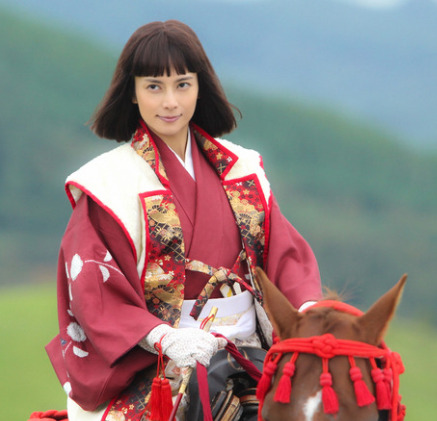
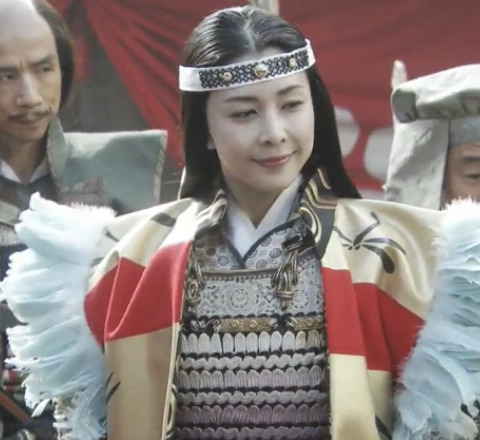
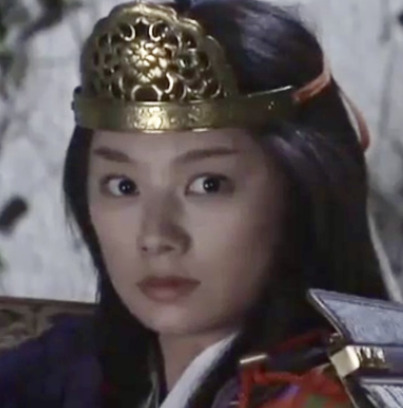


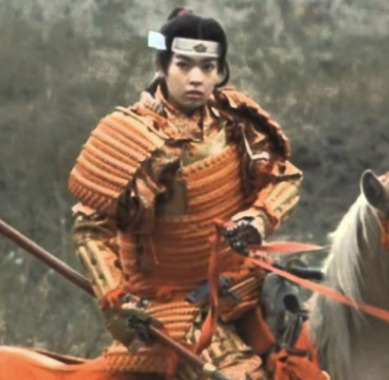
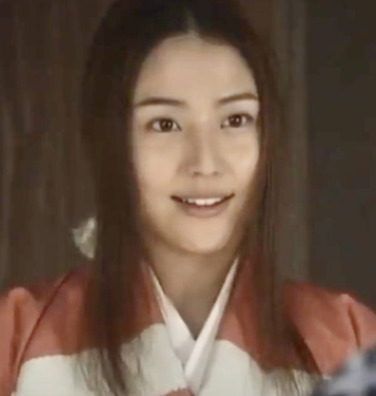
Female Warriors and Lords from Japanese Historical Dramas.
#female warriors#onna musha#female samurai#onna bugeisha#taiga drama#historical drama#japanese drama#japan#samurai#haruka ayase#yae no sakura#yae niijima#meisa kuroki#takeko nakano#ko shibasaki#ii naotora#ii naotora the lady warlord#yuko takeuchi#yodo dono#sanada maru#eiko koike#tomoe gozen#taira no kiyomori#higa manami#kikuhime#tenchijin#kyoko fukada#naomi zaizen#heaven and earth#masami nagasawa
20 notes
·
View notes
Text
Hanzo Shimada's Drag Queen Names
Because he would be a deadly queen.
Do forgive my mistakes if you see any, I don't speak japanese (neither english lmao). Here are the main categories I've looked at to find inspiration.
Related to this post :
Japanese Gods (Buddism and Shintoïsm)
Enma-ō 閻魔王 King of Hell (Buddism).
Fudō Myō-ō 不動明王 God of fire and anger (Buddism)
Zōchō-ten 増長天 "he who causes to grow" King of the south. His symbolic weapon is the sword. Associated with the color blue (Buddism). Sounds like the legend of a certain dragon, huh ?
Izanami 伊邪那美 the creator deity of both creation and death in Japanese mythology, as well as the Shinto mother goddess (Shintoïsme).
Real persons who existed
Hattori Hanzō gave his name to Hanzo. In fact this surname means "demon"... FIERCE
Shimada Ichirō. Another samourai. He's famous because he assassinated a powerful politician in 1878.
Sada Yacco, geisha, descendant of a family of samurai.
Jingū, Tomoe Gozen, Nakano Takeko are all Onna-musha (女武者) female warriors in pre-modern Japan. They fought in battle alongside samurai men. Inspiring I guess.
Culture
Arashi アラシ : Best stack you can have in Oicho-Kabu, a traditional japanese cards game. In opposite the worst stack, called Yakuza, might be the origin for the term used nowadays to call the outlaw gangs . It's also a name that is still used, meaning "storm", or is a metaphor for emotional turmoil.
The Great Mirror of Male Love (男色大鏡 Nanshoku Ōkagami) is a collection of homosexuality stories by Ihara Saikaku, published in 1687.
Shimada Shinzaemon, hero from the japanese movie called "13 assassins".
Kuwabatake Sanjuro (桑畑 三十郎), a wandering ronin and master swordsman drawn into a gang war. He is a character from the movie Yojimbo.
Random japanese names
Reiki (Unisex) A practice of healing the spirit. Yeah Hanzo needs to be healed.
Rin : (Unisex) A cold, severe and dignified person. It's litteraly Hanzo's personality.
Ahmya (Female) means black rain. Melancholic, like him.
Random adjectives
Blue - 青 aoi
Redemption - 取り戻し torimodoshi
Honor - 栄誉 eiyo
Dragon - 竜 ryu
Bow - 弓 yumi
Arrow - 矢 ya
Archer - 弓術家 kyuujutsu ie
Let's mix my favourite ones ...
Arashi Saikaku Jingū Hattori Ahmya Ihara Blue / Aoi Zōchō-ten
...
Have I just done hours of research to realise that my favourite Drag Queen name for Hanzo would be Blue ?
YES
I just want him to walk into a room and say
Hi, I'm Blue.

2 notes
·
View notes
Text
"We'll need at least a dozen samurai, doing a combination of jobs. Off the top of my head, I'd say you're looking at a Date Masamune, a Yasuke, a Tomoe Gozen, two Minamotos, and a Miyamoto Musashi, not to mention the biggest Nakano Takeko ever."
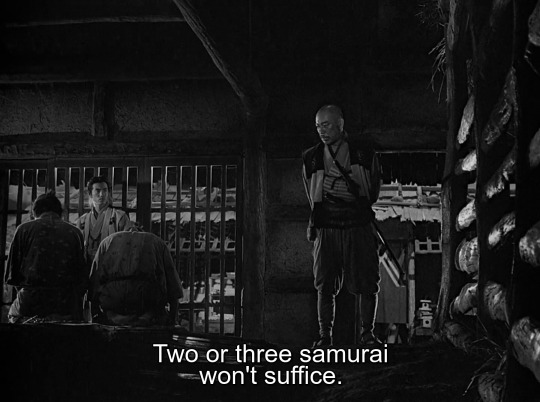
watching Seven Samurai
121K notes
·
View notes
Text
Onna-musha 女武者

大星良雄内��石女 Ishi-jo con naginata, de Utagawa Kuniyoshi 歌川国芳, oban tate-e (xilografía) perteneciente a la serie Seichu Gishin Den 誠忠義心傳, 1848.
Las 女武者 (onna-musha - mujer guerrera) u onna-bugeisha (女武芸者 - maestra del combate) fueron mujeres que durante los periodos de guerra aprendían a usar las armas para defenderse a sí mismas y a sus familias. Se entrenaban con diferentes armas, como los kunai y los shuriken, pero la más común fue la naginata, que se trataba de una lanza de hoja curva.
La mayoría datan de 1180 al 1185, durante las Guerras Genpei o o en el periodo Sengoku (1467-1568), donde durante las constantes batallas feudales se entrenaban a las mujeres para que defendieran los castillos. Llegaron incluso a liderar sus clanes.
Quizás la más antigua de las onna-musha fue Gozen Tomoe, de la que se decía que:
"valía por mil guerreros y, a caballo o a pie, habría combatido incluso a un dios o un demonio".
Algunas de ellas fueron:
Gozen Tomoe
Gozen Hangaku (Itagaki)
Hojo Masako
Jingū Kōgō
Myôrin
Nakano Takeko
Nijima Yae
Yodogimi
Yuki no Kata
Referencias.
https://historia.nationalgeographic.com.es/a/onna-bugeisha-mujeres-guerreras-japon_15761
https://webcitation.org/66U0EgZWg?url=http://www.koryu.com/library/wwj1.html#Introduction
0 notes
Text
NAKANO TAKEKO // SAMURAI
“She was one of the last samurais, fighting in the Boshin War. During the Battle of Aizu, she fought with a naginata and was the leader of a corps of female combatants who fought in the battle independently without permission. She asked her sister to cut off her head when she was shot, so the enemies could not take it as a trophy and give her an honourable burial. Her sister agreed, and after the battle, her head was moved by her sister to the temple of her family and was buried with honour by a priest under a pine tree.”


0 notes
